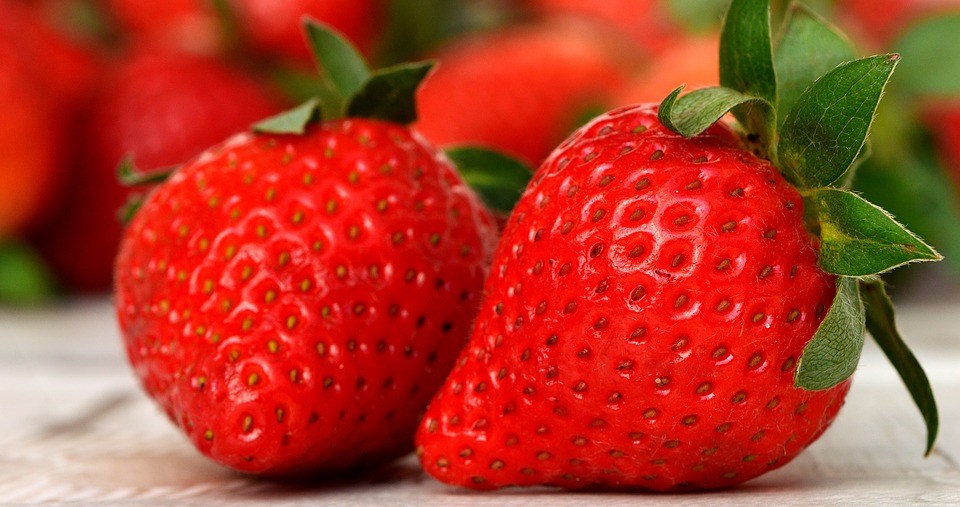
The strawberries are known as the queen of fruit in Asia. It is packed with Vitamin C, fiber, folic acid, manganese, potassium, antioxidants and is cholesterol free, they are low in calories.

Strawberries also contain significant amounts of phytonutrients and flavonoids which make them bright. They have been used in the medical context throughout history to help with the digestive system, whiten teeth and skin rashes or irritations.
There are different pests that infest and damage strawberry plants, out of which the tarnished plant bugs are the most attracted bugs towards strawberries, they are also known as lygus bugs.
Strawberries continuously bloom and produce fruit during the entire season and require more attention. Some strawberry growers say that rather than farming, growing strawberries is more like gardening.
Tarnished plant bug infestation produces distorted or cat faced fruit, this damage is caused due to feeding by nymphs as fruit develop. Nymphs puncture individual seeds and inject a growing strawberry seed with a toxin since at the point of injection the strawberry will stop developing as this will result in deformed strawberries.
Deformed strawberries don’t resemble like a normal strawberry they look different and they are also known as button or nubbins berries. Unlike the normal one, the deformed strawberries can contain scars, broken skin, while some are with mold or decay or those that are either undeveloped or too ripe. The damaged seeds are brown on the outer side and hollow on the inside.
Let us have a look at evidence,
Vacuuming up one tough bug
Different crops can be attacked by different pests, but the quarter-inch-long critter known as the lygus bug has a broad appetite. More than 200 plants may be hosts for lygus, causing damage to many California crops.
Lygus bugs, also known as western tarnish bugs, damage strawberry fruit by puncturing individual seeds; in turn, this stops development of the berry in the area surrounding the feeding site. The result is an irregularly shaped berry, also known as “cat-faced,” for the resulting damage can look like a feline face.
Pesticides have detrimental effects on human health; with young children among the particularly vulnerable, low levels of pesticide exposure can affect young children’s neurological and behavioral development. Pesticides can cause deadly diseases like asthma, autism and learning disabilities, birth defects and reproductive dysfunction, diabetes, Parkinson’s and Alzheimer’s diseases, and several types of cancer. Get rid of them naturally without using pesticides by using our safe methods.
C Tech Corporation can offer a solution to overcome this problem. Our product Combirepel™ is
Combirepel™ is available in the form of the masterbatch, which can be incorporated with the polymeric applications like tree guards, pipes, agricultural films, wires, and cables, etc. to keep pests at bay.
The product available in the form of liquid concentrate can be mixed in paints in a predetermined ratio and can be applied topically on the applications.
The product available in the form of lacquer can be used as a topical application and can be applied to keep the pest at a distance from the plants.
The product is compliant with RoHS, RoHS2, and REACH and is FIFRA exempted. This product acts through a series of highly developed intricate mechanism ensuring that pests are kept away from the target application.
The product is also effective against other pests thus protecting the plants from other pest attacks.
Combirepel™ is thermally stable and does not degrade on exposure to heat and sunlight. It does not kill or harm the insect but repels them. It does not volatilize and does not degrade the soil. It is RoHS, RoHS2, ISO, REACH, APVMA, NEA, EU BPR compliant and FIFRA exempted.
Contact us at technical.marketing@ctechcorporation.com if you’re facing problems with rodents and get best remedies to combat the pest menace.
Also, visit our websites:
http://www.ctechcorporation.com/
http://www.rodrepel.com/
http://www.termirepel.com/
http://www.combirepel.com/
Follow our Facebook pages at:
1] https://www.facebook.com/Combirepel-411710912249274/
2] https://www.facebook.com/Termirepel-104225413091251/
3] https://www.facebook.com/Rodrepel-120734974768048/
Follow us on our Twitter pages at:
1] https://twitter.com/rodrepel
2] https://twitter.com/termirepel
3] https://twitter.com/combirepel

